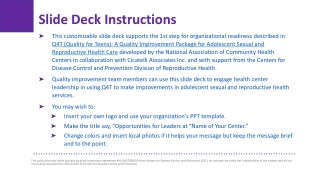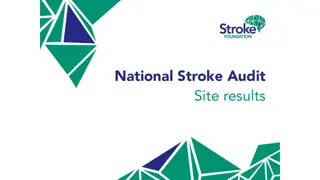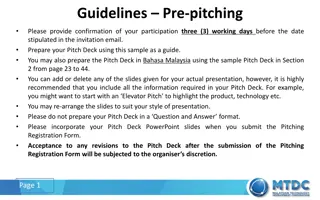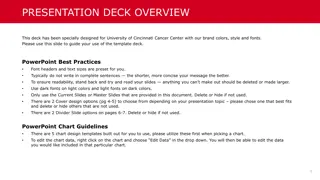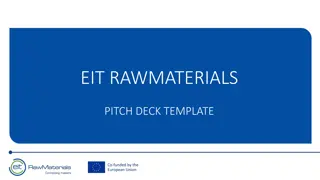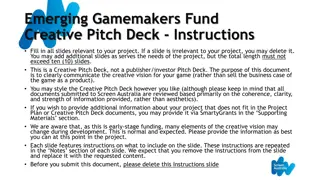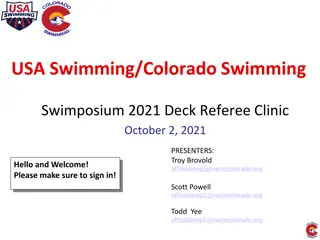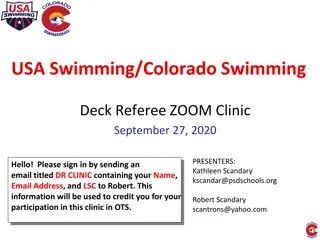
Implementing Online and On-Ground Teaching Strategies: A Case Study Approach
Explore the implementation of teaching strategies in both online and on-ground environments through a case study involving a group therapy session for substance use disorder. The narrative showcases challenges and key elements for successful implementation.
Download Presentation

Please find below an Image/Link to download the presentation.
The content on the website is provided AS IS for your information and personal use only. It may not be sold, licensed, or shared on other websites without obtaining consent from the author. If you encounter any issues during the download, it is possible that the publisher has removed the file from their server.
You are allowed to download the files provided on this website for personal or commercial use, subject to the condition that they are used lawfully. All files are the property of their respective owners.
The content on the website is provided AS IS for your information and personal use only. It may not be sold, licensed, or shared on other websites without obtaining consent from the author.
E N D
Presentation Transcript
CTLE (Online and On-ground Teaching) Module 3 Practice
Think about the ways to implement it in an online & on-ground learning environment Create a Case Study Key Elements Example: Three-step implementation framework (Bixler et al., 2021) NATIONAL LOUIS UNIVERSITY
Issue or problem that arises in the field Sample: A disrespectful patient in a group therapy setting. How to orient new therapists to running group therapy sessions. Your examples: NATIONAL LOUIS UNIVERSITY
Characters and context Sample Context - You run a clinic which offers group therapy sessions for substance use disorder, which meet 3x/week for three hours Characters - Jim, a patient who is new to the group, has been ordered by his employer to attend sessions. Caroleena, a therapist who supervises the group and intern. Jackie, an intern who has finished her coursework and is graduating at the end of this internship. Nancy, Sidney, Robert, Colin, and John are the other group members. Your Example Context [This is a scenario or challenge that arises. Or this could be an ethical dilemma that could be faced in the field.] - Characters [Relevant people who will play a role in the case] - NATIONAL LOUIS UNIVERSITY
Field or content relevant information Sample Key terms - Intensive Outpatient Program (IOP) is a modality of therapy where patients attend at least three days a week for at least three hours a day. Transference - When the therapist/authority figure activates memories and emotions related to a significant person in one s life, such that they react toward the therapist/authority figure as they would toward that significant person. Key concepts - It is common for group members to be randomly screened for drug or alcohol use prior to group. Clinical staff can also spot test if they suspect drug or alcohol use (by smelling it or seeing patients nod- off ). Professional Ethics standards (normally this would include a link). Your Example Key terms - Key concepts - NATIONAL LOUIS UNIVERSITY
Use a narrative to introduce the concepts in the previous three slides Sample Caroleena wants to make Jackie s learning experience as robust as possible, and so she asks Jackie to get today s group started. Caroleena introduces Jackie to the group, as there is a new member today, Jim. Jim has been mandated by his employer to seek help for his alcohol dependence in order to return to work. Jim s body language indicates he doesn t want to be here. As Jackie is introducing herself, Jim interrupts her, You mean to tell me we have college students running this thing? You guys take advice from her? The rest of the group doesn t respond at first. Jackie responds, I m not a college student, I m a graduate student who s about to Jim again interrupts, Hey, as long as you sign-off on my sheet, I don t really care. Sidney responds, This is going to be a long process Jim asks, what s that supposed to mean? Nancy replies, He means for you If you think you re going to be done in 10-weeks with that attitude, you re dreaming. Jim stares at Nancy and Sidney, plotting his next retort. Caroleena interjects, Nancy, tell me what you mean by that. This moment is a turning point for the day s session. Nancy begins to talk about her own experience when she entered the group and how recovery has to be something you want to do, not something you have to do. While Jim s body language didn t change, he sat quietly for the duration of the day. Caroleena takes over the session, and occasionally invites Jackie to participate via questions or prompting. NATIONAL LOUIS UNIVERSITY
Use a narrative to introduce the concepts in the previous three slides Your Example: NATIONAL LOUIS UNIVERSITY
Key takeaways to be addressed during conversation These will help you create questions for students to consider at the end of the Case Study Sample It is important to understand where each patient is at in their recovery. We need to consider our role in the recovery process and that transference may guide a patient s responses to us. We need to operate within our bounds of competence and know when to ask for help. Your Example NATIONAL LOUIS UNIVERSITY
Questions for Students Sample Caroleena and Jackie debrief with you after the session, and you pose the following questions. Work together in groups to discuss the answers to these questions. What about Jim s body language might tell you he doesn t want to be in the group? Why was Jackie s reply (being a graduate student) not likely to be successful? What is your sense of Jim s view of authority? What support might Jackie have needed to be successful in this situation? Your Example NATIONAL LOUIS UNIVERSITY
Implementation for online vs. on-ground learning Adapt to Your Modality (Which parts of this you assign prior/during/after class? Which technologies will help students work on this collaboratively, if needed. For example, using D2L Groups to create group discussion boards to discuss the material; creating a separate Google doc of the narrative for each group to annotate; Zoom breakout rooms for discussions) NATIONAL LOUIS UNIVERSITY
References Bixler, A., Eslinger, M., Kleinschmit, A., Gaudier-Diaz, M., Sankar, U., Marsteller, P., Goller, C., and Robertson, S. (2021). Three steps to adapt case studies for synchronous and asynchronous online learning. Journal of Microbiology & Biology Education, 22(1). https://doi.org/10.1128/jmbe.v22i1.2337 NATIONAL LOUIS UNIVERSITY


